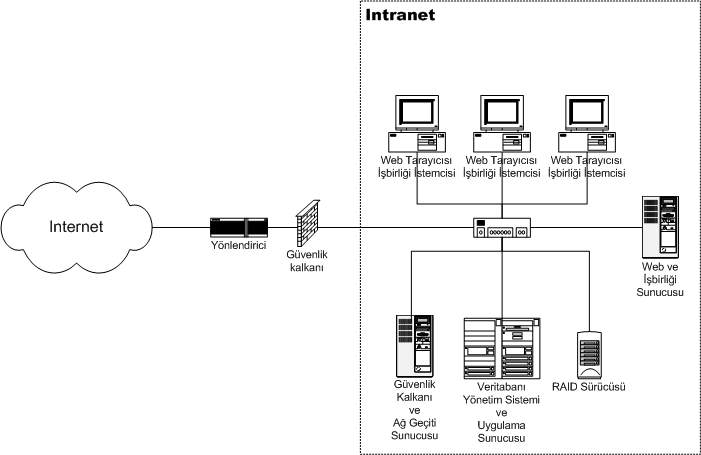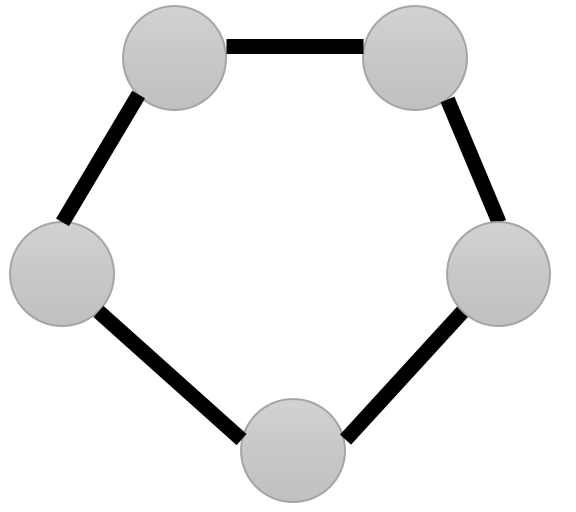|
Berkeley Algorithm
The Berkeley algorithm is a method of clock synchronisation in distributed computing which assumes no machine has an accurate time source. It was developed by Gusella and Zatti at the University of California, Berkeley in 1989. Like Cristian's algorithm, it is intended for use within intranets. The algorithm Unlike Cristian's algorithm, the server process in the Berkeley algorithm, called the ''leader'', periodically polls other ''follower'' processes. Generally speaking, the algorithm is: # A ''leader'' is chosen via an election process such as Chang and Roberts algorithm. # The ''leader'' polls the ''followers'' who reply with their time in a similar way to Cristian's algorithm. # The ''leader'' observes the round-trip time In telecommunications, round-trip delay (RTD) or round-trip time (RTT) is the amount of time it takes for a signal to be sent ''plus'' the amount of time it takes for acknowledgement of that signal having been received. This time delay includes p .. ... [...More Info...] [...Related Items...] OR: [Wikipedia] [Google] [Baidu] [Amazon] |
Clock Synchronisation
Clock synchronization is a topic in computer science and engineering that aims to coordinate otherwise independent clocks. Even when initially set accurately, real clocks will differ after some amount of time due to clock drift, caused by clocks counting time at slightly different rates. There are several problems that occur as a result of clock rate differences and several solutions, some being more acceptable than others in certain contexts. Terminology In serial communication, clock synchronization can refer to clock recovery, which achieves frequency synchronization, as opposed to full phase synchronization. Such clock synchronization is used in synchronization in telecommunications and automatic baud rate detection. Plesiochronous or isochronous operation refers to a system with frequency synchronization and loose constraints on phase synchronization. Synchronous operation implies a tighter synchronization based on time perhaps in addition to frequency. Problems As a resul ... [...More Info...] [...Related Items...] OR: [Wikipedia] [Google] [Baidu] [Amazon] |
Distributed Computing
Distributed computing is a field of computer science that studies distributed systems, defined as computer systems whose inter-communicating components are located on different networked computers. The components of a distributed system communicate and coordinate their actions by passing messages to one another in order to achieve a common goal. Three significant challenges of distributed systems are: maintaining concurrency of components, overcoming the lack of a global clock, and managing the independent failure of components. When a component of one system fails, the entire system does not fail. Examples of distributed systems vary from SOA-based systems to microservices to massively multiplayer online games to peer-to-peer applications. Distributed systems cost significantly more than monolithic architectures, primarily due to increased needs for additional hardware, servers, gateways, firewalls, new subnets, proxies, and so on. Also, distributed systems are prone to ... [...More Info...] [...Related Items...] OR: [Wikipedia] [Google] [Baidu] [Amazon] |
Cristian's Algorithm
Cristian's algorithm (introduced by Flaviu Cristian in 1989) is a method for clock synchronization which can be used in many fields of distributive computer science but is primarily used in low-latency intranets. Cristian observed that this simple algorithm is probabilistic, in that it only achieves synchronization if the round-trip time (RTT) of the request is short compared to required accuracy. It also suffers in implementations using a single server, making it unsuitable for many distributive applications where redundancy may be crucial. Description Cristian's algorithm works between a process ''P'', and a time server ''S'' connected to a time reference source. Put simply: # ''P'' requests the time from ''S'' at time . # After receiving the request from ''P'', ''S'' prepares a response and appends the time from its own clock. # ''P'' receives the response at time then sets its time to be , where . If the RTT is actually split equally between request and response, the sync ... [...More Info...] [...Related Items...] OR: [Wikipedia] [Google] [Baidu] [Amazon] |
Intranets
An intranet is a computer network for sharing information, easier communication, collaboration tools, operational systems, and other computing services within an organization, usually to the exclusion of access by outsiders. The term is used in contrast to public networks, such as the Internet, but uses the same technology based on the Internet protocol suite. An organization-wide intranet can constitute an important focal point of internal communication and collaboration, and provide a single starting point to access internal and external resources. In its simplest form, an intranet is established with the technologies for local area networks (LANs) and wide area networks (WANs). Many modern intranets have search engines, user profiles, blogs, mobile apps with notifications, and events planning within their infrastructure. An intranet is sometimes contrasted to an extranet. While an intranet is generally restricted to employees of the organization, extranets may also be accesse ... [...More Info...] [...Related Items...] OR: [Wikipedia] [Google] [Baidu] [Amazon] |
Leader Election
In distributed computing, leader election is the process of designating a single Process (computing), process as the organizer of some task distributed among several computers (nodes). Before the task has begun, all network nodes are either unaware which node will serve as the "leader" (or Distributed computing#Coordinator election, coordinator) of the task, or unable to communicate with the current coordinator. After a leader election algorithm has been run, however, each node throughout the network recognizes a particular, unique node as the task leader. The network nodes communicate among themselves in order to decide which of them will get into the "leader" state. For that, they need some method in order to break the symmetry among them. For example, if each node has unique and comparable identities, then the nodes can compare their identities, and decide that the node with the highest identity is the leader. The definition of this problem is often attributed to LeLann, who f ... [...More Info...] [...Related Items...] OR: [Wikipedia] [Google] [Baidu] [Amazon] |
Chang And Roberts Algorithm
The Chang and Roberts algorithm is a ring-based coordinator election algorithm, employed in distributed computing. The algorithm The algorithm assumes that each process has a Unique Identification (UID) and that the processes can arrange themselves in a unidirectional ring with a communication channel going from each process to the clockwise neighbour. The two part algorithm can be described as follows: # Initially each process in the ring is marked as ''non-participant''. # A process that notices a lack of leader starts an election. It creates an ''election message'' containing its UID. It then sends this message clockwise to its neighbour. # Every time a process sends or forwards an ''election message'', the process also marks itself as a participant. # When a process receives an ''election message'' it compares the UID in the message with its own UID. ## If the UID in the election message is larger, the process unconditionally forwards the ''election message'' in a clockw ... [...More Info...] [...Related Items...] OR: [Wikipedia] [Google] [Baidu] [Amazon] |
Round-trip Time
In telecommunications, round-trip delay (RTD) or round-trip time (RTT) is the amount of time it takes for a signal to be sent ''plus'' the amount of time it takes for acknowledgement of that signal having been received. This time delay includes propagation times for the paths between the two communication endpoints. In the context of computer networks, the signal is typically a data packet. RTT is commonly used interchangeably with ping time, which can be determined with the ping command. However, ping time may differ from experienced RTT with other protocols since the payload and priority associated with ICMP messages used by ping may differ from that of other traffic. End-to-end delay is the length of time it takes for a signal to travel in one direction and is often approximated as half the RTT. Protocol design RTT is a measure of the amount of time taken for an entire message to be sent to a destination and for a reply to be sent back to the sender. The time to send the mes ... [...More Info...] [...Related Items...] OR: [Wikipedia] [Google] [Baidu] [Amazon] |
Make (software)
In software development, Make is a command-line interface software tool that performs actions ordered by configured dependencies as defined in a configuration file called a ''makefile''. It is commonly used for build automation to build executable code (such as a program or library) from source code. But, not limited to building, Make can perform any operation available via the operating system shell. Make is widely used, especially in Unix and Unix-like operating systems, even though many competing technologies and tools are available, including similar tools that perform actions based on dependencies, some compilers and interactively via an integrated development environment. In addition to referring to the original Unix tool, Make is also a technology since multiple tools have been implemented with roughly the same functionality including similar makefile syntax and semantics. Origin Stuart Feldman created Make while at Bell Labs. An early version was completed in ... [...More Info...] [...Related Items...] OR: [Wikipedia] [Google] [Baidu] [Amazon] |

